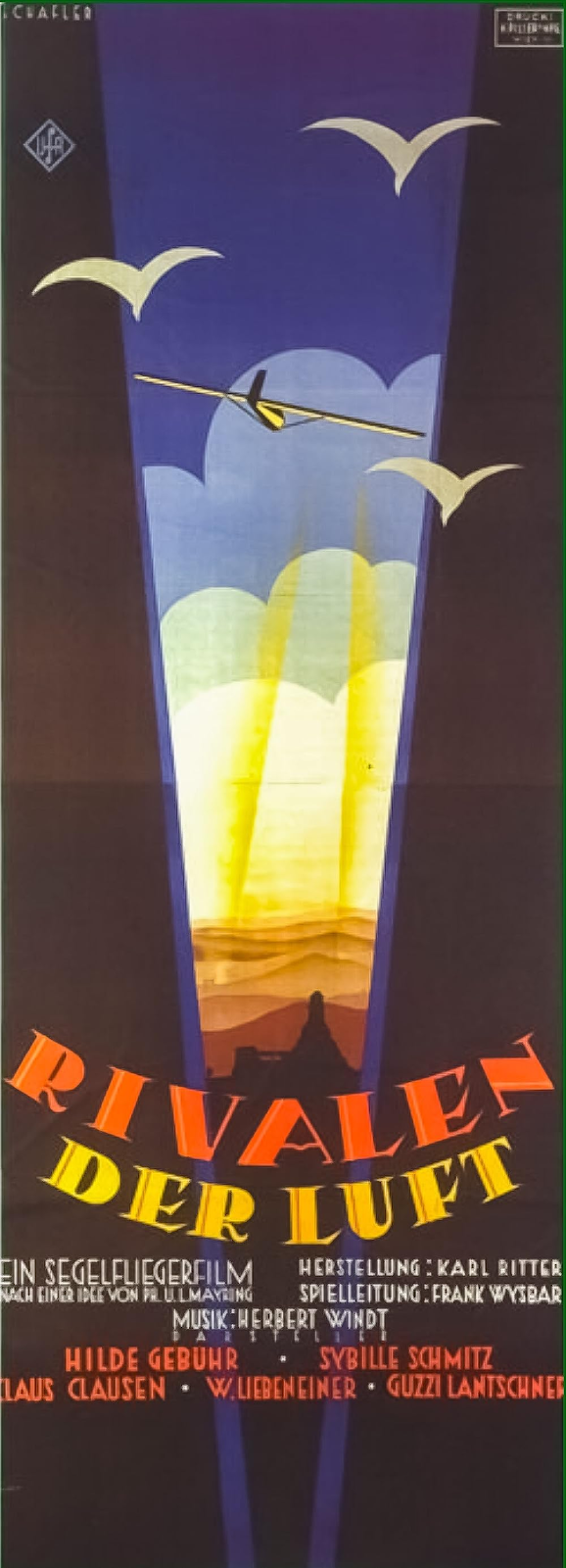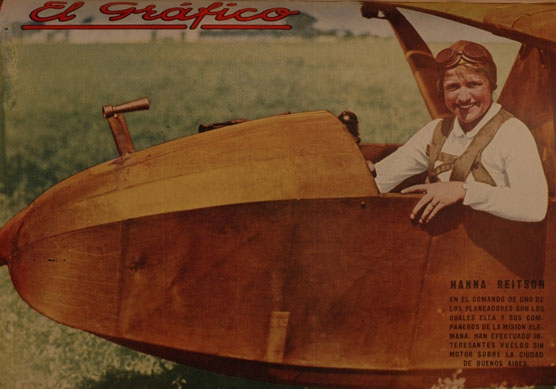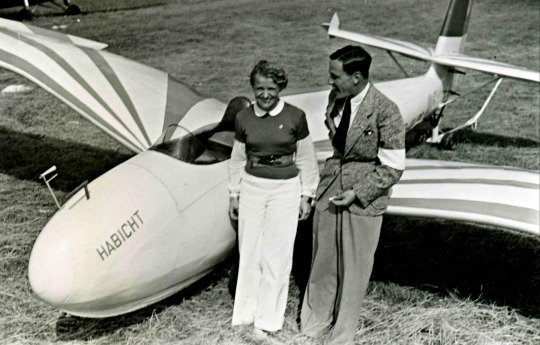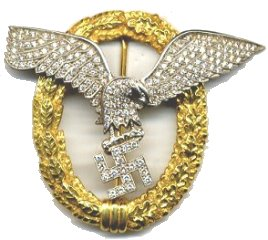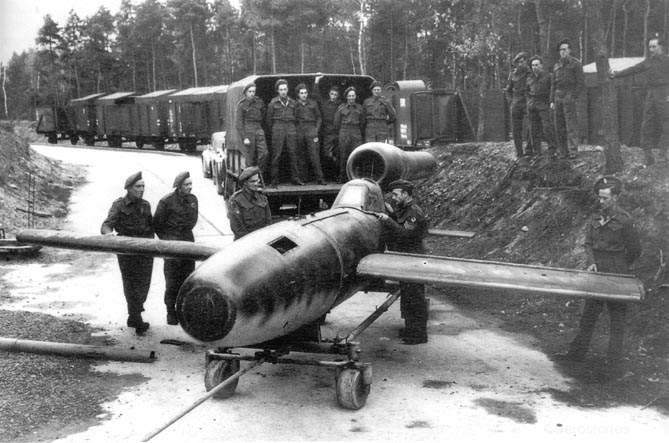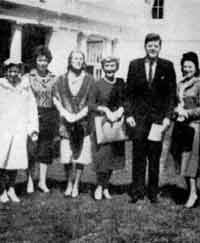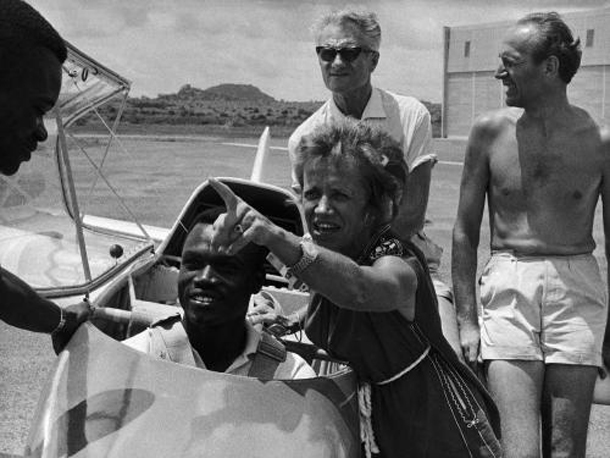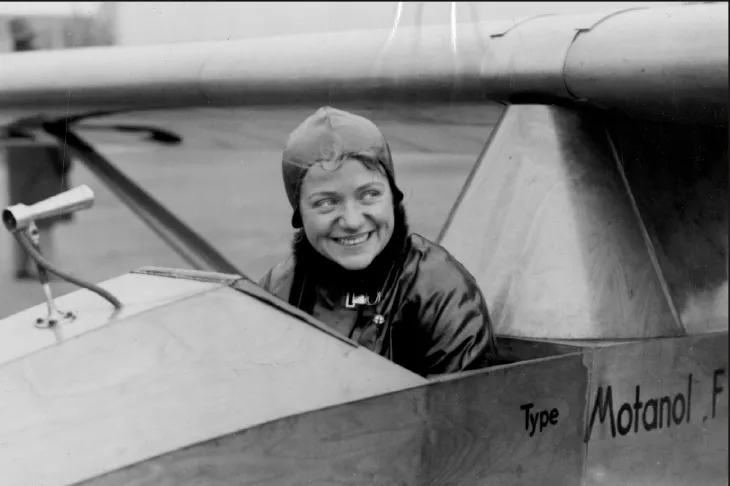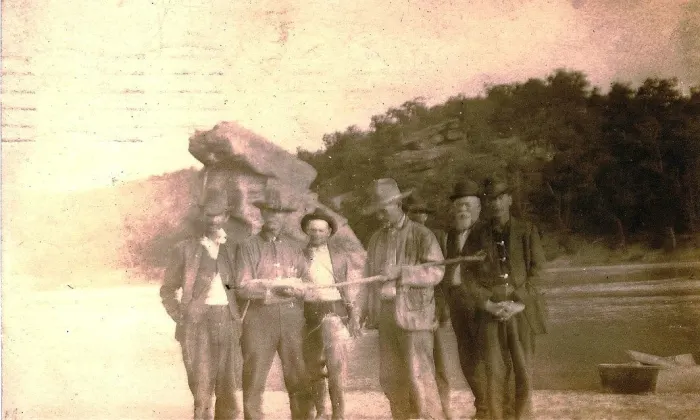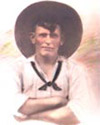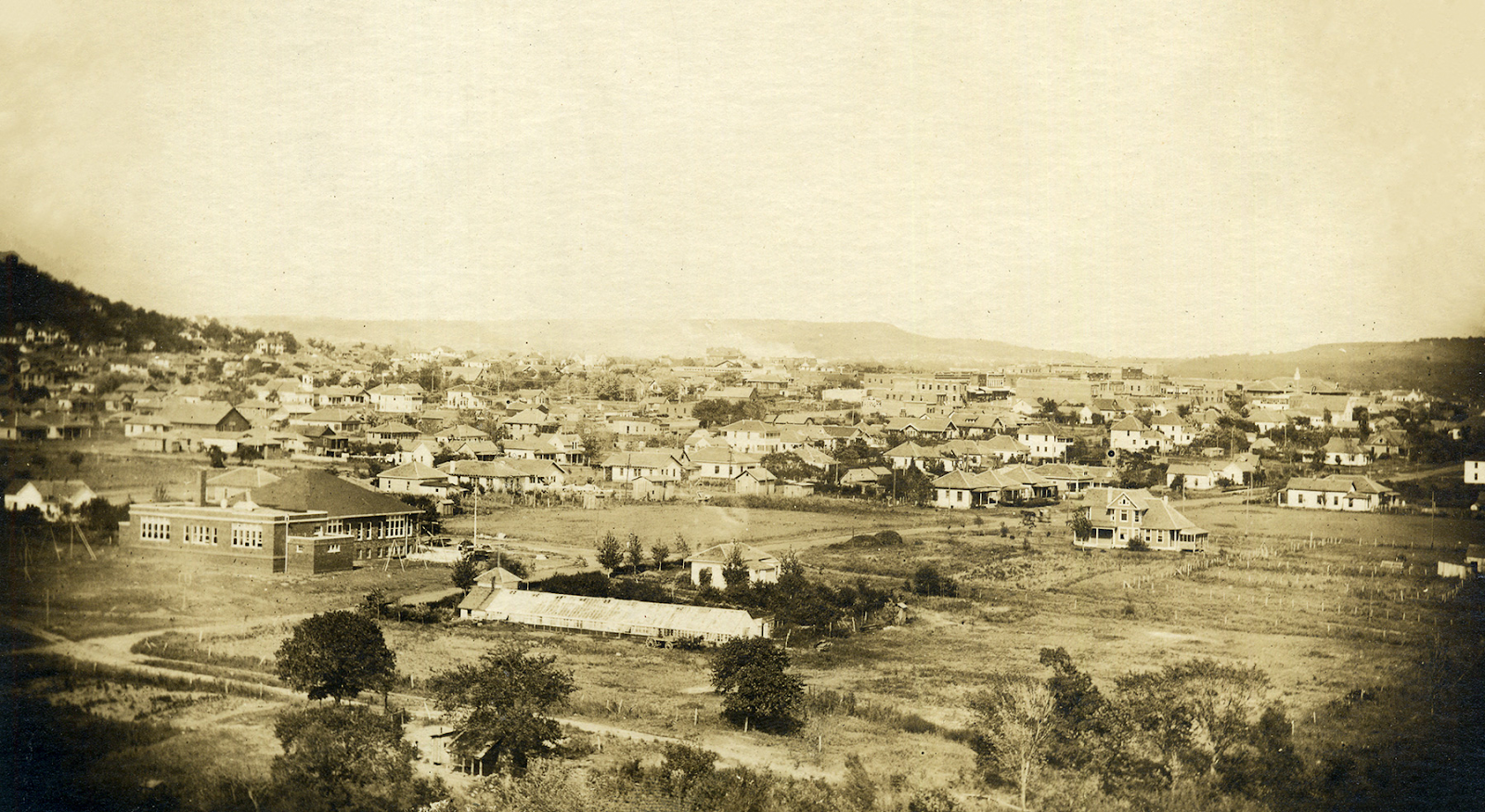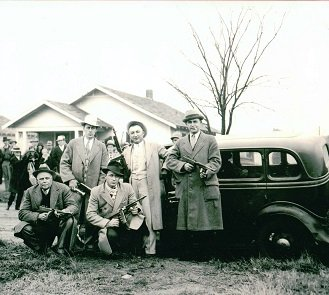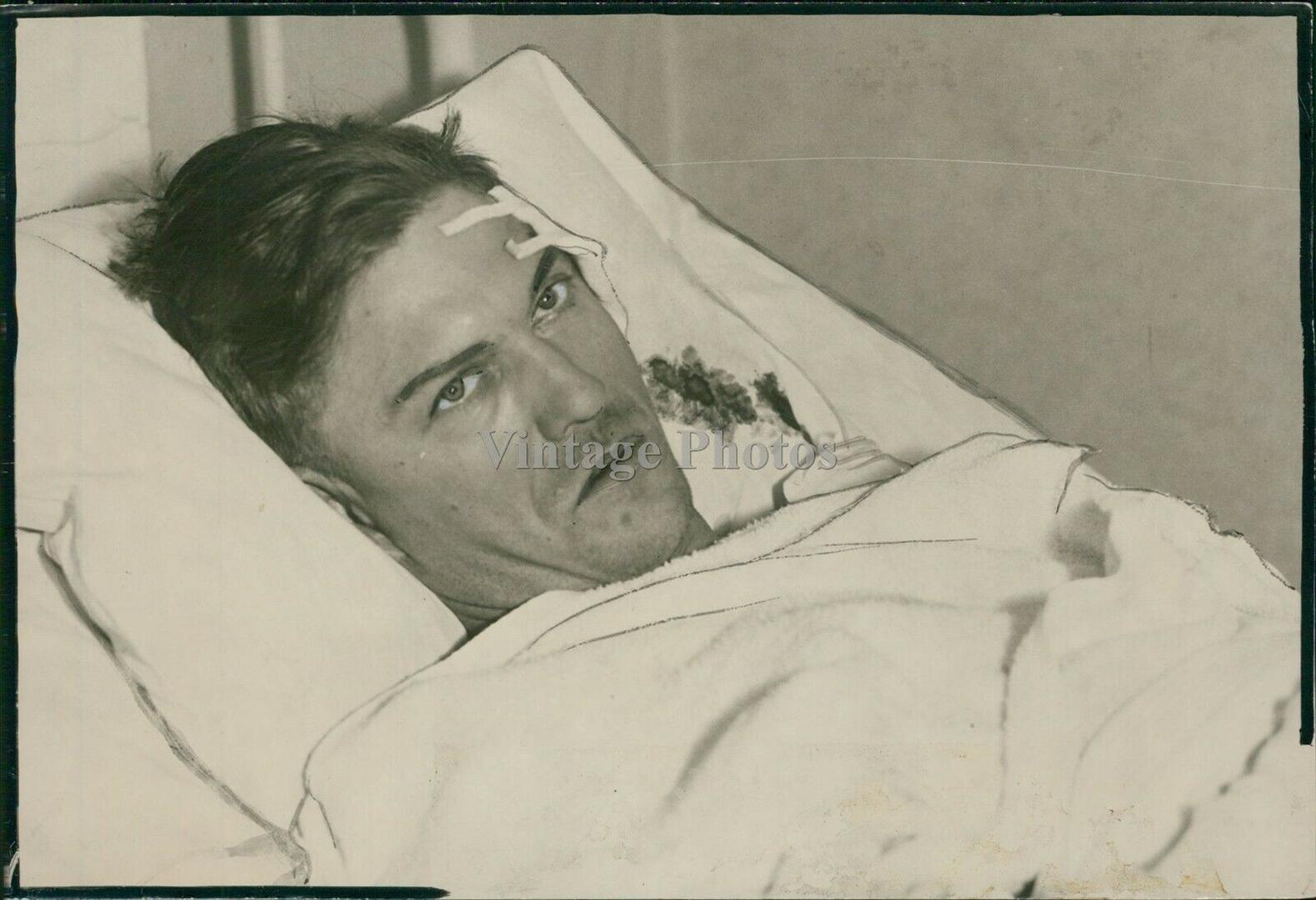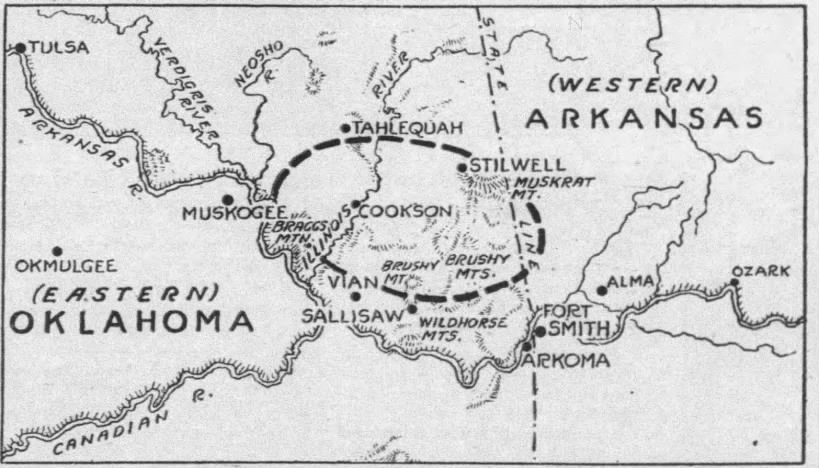3/3/1934 - The life of Oklahoma outlaw Ford Allen Bradshaw, comes to an abrupt end and violent end when the desperado decides to relax a little by visiting a Arkoma, Oklahoma (a small town on the state's eastern border with Arkansas) roadhouse known for cold beers, live country music, and good looking women looking to dance their evenings away ... an establishment owned and operated by the brother of LeFlore County, Oklahoma Deputy Sheriff Bill Harper, who works at the establishment when not on county business.
Headlines
The tales of infamous Wild West Oklahoma outlaws like the Dalton Gang, Bill Doolin's Oklahombres (featuring a cast of characters that along with Doolin includes William Marion "Bill" Dalton, Roy Daugherty aka "Arkansas Tom Jones,"William "Tulsa Jack" Blake, Dan "Dynamite Dick" Clifton, George "Bitter Creek" Newcomb aka "The Slaughter Kid," Charley Pierce, William F. "Little Bill" Raidler, George "Red Buck" Waightman, Richard "Little Dick" West, Oliver "Ol" Yantis, Jannie "Little Britches" Stevenson, and Anna Emmaline "Cattle Annie" McDoulet), Indian Territory desperado Henry Starr, and Cherokee lawman turned outlaw Ned Christie still relatively fresh in the minds of residents of the state, Ford Allen Bradshaw, the youngest of four children is born into the Dawes Roll (a congressional mandated listing of individuals officially belonging to one of the Five Civilized Tribes of Oklahoma: Cherokee, Chickasaw, Choctaw, Creek, and Seminole) family of James "Jim" Bradshaw and Mary Sanders Bradshaw at a small homestead in a southern portion of the Cookson Hills near the Sequoyah County town of Vian (about five miles north of town) on Friday, January 5, 1906. Growing up in an area still frequented by outlaws, his father a convicted bank robber, treated as a half-breed most of his life, on a farm never lacking in back-breaking work, Ford Bradshaw grows up as an often in trouble juvenile delinquent (as does his half-brother, Tom "Skeet" Bradshaw aka "Skeet" Atkins), his violent proclivities masked by his intelligence, wit, and handsome smile.
Ford Bradshaw
Petty crimes are left behind however when the nation goes dry on October 28, 1919 as Congress passes the Volstead Act making the production, importation, transportation, and sale of alcohol becomes illegal. Looking for bigger paydays that what he can make selling crops, at only fourteen years of age, Bradshaw becomes a bootlegger, an occupation that has the young criminal mixing with more and more Oklahoma crooks and spending a large amount of time behind bars (he will meet future bank robbing partner, the Tri-State Terror, Wilbur Underhill Jr., when the two share quality cell time in the Okmulgee jail and at the Oklahoma State Prison in McAlester). Worse though is the fact that Bradshaw begins drinking his own product and quickly becomes an alcoholic, and when drunk, which is almost all the time, he is prone to sudden anger and extreme violence. The savagery of his soused personality is on full display in 1927 when an inebriated 20-year-old Bradshaw and four friends get in a drunken brawl at the Hitchita, Oklahoma café where they have been partying, tearing the business to pieces. Riot call placed, Bradshaw and his rough pals are arrested by the town marshal and members of the Okmulgee County Sheriff's Department. Foolishly thought peaceable enough to be guarded by one officer, Bradshaw and three of his companions attack the deputy driving them to the county jail, beating him within inches of death and pitching him from the moving car he was transporting the hoodlums in. The almost escape ends when the deputy following the vehicle with Bradshaw and his cohorts in it opens fire on the men and wounds two of the escapees. One of the wounded the car's newest driver, the vehicle crashes into a ditch and the renegade partiers are soon back in custody.
Downtown Okmulgee - 1920s
Freed by 1928, Bradshaw teams with one of his cronies from the Hitchita riot, John Rogers, and the pair take down a filling station in Muskogee for chump change, and five year terms behind the bars of the state prison for each when the miscreants are caught a few days later and plead guilty to armed robbery. Released from prison in 1931, Bradshaw comes to the attention of the authorities again when he is discovered withering in front of a downtown Muskogee gas station with a .38 slug in his stomach; an injury which the ex-con refuses to elaborate on. Treated and released by a local hospital, a few days later Bradshaw, with Rogers again, is arrested near the town of Sallisaw for the transportation of ardent spirits (booze) and does another thirty days behind bars, along with paying a hefty fine. Party trouble once more, in September of 1932, Bradshaw adds murder to his criminal resume when he participates in a failed car-jacking near a combination honky-tonk and whorehouse outside of Muskogee, on the side of Braggs Mountain, a crime that results in the shooting death of a 48-year-old housewife named Susie Sharp (also wounded in the incident are Sharp's daughter and grandson). Also charged in the murder are Bradshaw's nephew-in-law, Ed "Newt" Clanton (a bank robber and ex-con from Chelsea, Oklahoma), Thomas "Kye" Carlile (an escapee from the Arkansas State Penitentiary at Little Rock doing a beef at the facility for two bank jobs), Jim Benge, and Troy Love (another Arkansas State Penitentiary escapee doing time for burglary and the attempted murder of a police officer). Hunting the killers, a group of lawmen setup a roadblock on a lonely dirt road over the Illinois River near the Standing Rock Bridge. In the early morning darkness of Saturday, September 17, 1932, lawmen ambush a dark sedan driven by a 28-year-old farmer from nearby community of Barber named Bud McClain believed to be carrying Carlile, Love, and an unidentified man thought to be either Bradshaw or outlaw Robert Trollinger. In the shotgun and machine gun fire the posse unleashes on the car they have targeted, McClain is killed and Carlile is severely wounded. Love missed in the fusillade that hits the car, the Arkansas gunman jumps out of the decimated vehicle and opens up on the lawmen with a high-powered rifle, killing the group's leader, 44-year-old Muskogee County Deputy Sheriff Webster Reece (he expires on the ride to a nearby hospital from a stomach wound) and mortally wounding Tahlequah policeman Frank Edwards (in the hospital as a result of a slug hitting him in the mouth, passing through his tongue, and lodging in the back of his neck, the four year veteran of the Tahlequah Police Department will catch pneumonia and perish, leaving behind a wife and child). The next day, a posse of 26 men follows the trail of the killers to home of Tom Dawes, where the outlaws have has breakfast before moving on to the farm of Rice Carter. Spotted taking cover in a small thicket of trees on the edge of the property, the posse breaks into three groups of men who take up positions to the north, west, and east side of the trees, only to treeless field to the south is left open to the outlaws. Refusing the call to surrender, the outlaws open up on the lawmen and in turn are fired on by the authorities. In the first exchange of bullets (over 200 will be fired in the battle), 38-year-old Muskogee policeman Andrew McGinnis is hit in the heart by a bandit slug and dies instantly (he leaves behind a wife and four children), while 55-year-old Claremore Deputy Sheriff J. Hurt Flippen is mortally wounded (he dies the next day from internal bleeding at a local hospital). Ammunition completely used up, the two outlaws try to make a run to another set of trees, but are caught by sprays of machine gun fire from the posse and shot to pieces, with both men transformed into bloody corpses.
Standing Rock In The Background
McGinnes And Flippen
The News
Appearing as having avoided retribution for the time being, Bradshaw remains in hiding until Sunday, October 16, 1932, when once again drunk while at a northside Muskogee speakeasy, he engages in a gambling argument with a fellow patron named George Martin that ends in gunfire that takes Martin's life. Recognizing the area has filled with lawmen seeking various rewards for his capture, Bradshaw, accompanied by Clanton, flees the region, heading for Tulsa in a black Chevy Coup. Three weeks later, on Monday, November 7, 1932 at noon, Bradshaw, Clanton, and Jim Benge hit the American Exchange Bank of Henryetta. In the robbery that takes place, Bradshaw and one of his cohorts enter the bank building (the other remains out front in the band's getaway car), pull revolvers, control the three individuals they find in the bank, and then have A. D. Diamond, the establishment's bookkeeper, fill a canvas sack with money. A flawless heist that takes only a few minutes to achieve, the $11,352 the gang leaves town with will be Bradshaw's biggest criminal payday to date, and even better, the authorities will think the deed was pulled off by a gang consisting of Pretty Boy Floyd, George Birdwell, and Aussie Elliott. A few weeks later, on December 12th, Ford and his younger brother Skeet are pinched at a police roadblock outside of Vinita. Placed on trial, both brothers will be found not guilty of the crime when their defense lawyer is able to establish "reasonable doubt" within the jury by showing that the local authorities believe Pretty Boy Floyd was the culprit, not Ford Bradshaw. Not guilty, but not free, Bradshaw is then transferred to Muskogee County where he is put on trial for the George Martin murder ... and once again beats the rap when witnesses scheduled to testify don't show up in court and Bradshaw is allowed to bond out of jail for $4,000, which he pays in money taken during the Henryetta job.
Henryetta, Oklahoma
Shortly afterwards, a new bank robbing band that will come to be known as the Bradshaw-Underhill Gang comes together at the Cookson Hills farm of Bradshaw's father, along with the two Bradshaw brothers the outfit will feature Wilbur Underhill Jr. (a sociopathic gunsel who in his brief 32-years on the planet will by convicted of burglary, armed robbery, rape, and murder, roll numerous southwest banks and businesses, kill a citizen, a deputy, and a patrolman, engage authorities in two violent gun battles, get sentenced to life in prison twice, and will breakout out of an Oklahoma jail, and the Oklahoma and Kansas state prisons), the Eno brothers (armed robbers and ex-convicts, Clarence and Otis "Tony" ... Tony will marry Bradshaw's sister, Gypsy), Clanton, John "Kaiser Bill Goodman (a paroled armed robber of trains and banks by both horse and car), Charlie "Cowboy" Cotner (the former cellmate of Underhill, an Arkansas bank robber known for his photographic memory and buckle winning rodeo skills), Joe Harris (a recently released armed robber) and Robert Trollinger (a former bootlegger). The new gang introduces itself to the world on September 19, 1933, when outside of Sallisaw, Oklahoma, using the convincing power of a .45 automatic, three members of the outlaw band take the vehicle of automobile dealer Max Reager for a robbery they have planned for the next day. On September 20th, the Dotson crew takes over $9,000 out of the First National Bank of York, Nebraska, while the Underhill group takes a $1,000 from the People's National Bank of Stuttgart, Arkansas (the gang is thwarted from taking more by a time lock and bank employee Joan Morgan's refusal to help the thieves open a safe) before returning to the relative safety of the Cookson Hills. The gang's "modus operandi" is used again in October when a getaway car is stolen (a black 1932 Model Chevy Sedan) on the night of the 8th outside of Purcell, Oklahoma from 21-year-old Owen Gallamore (coming back from attending church with 16-year-old Bernice Thorton) by the gang, and the next day two members hit the Farmers and Merchants Bank of Tryon, Oklahoma for the chump change total of only $537.20, while about an hour later in the day, a crew of five outlaws (Underhill, Charlie Cotner, Newt Clanton, Ford Bradshaw, and Clarence Eno) withdraws $3,000 from the American National Bank of Baxter Springs, Kansas. The gang is back in action on the 11th of the month, when a machine gun and three pistols are used by four men (witnesses will later identify Underhill, he is the outlaw with the tommy gun, Bradshaw, Charlie Dotson, and Jim Benge) to take $1,200 in cash and silver.
Underhill
Heat from the authorities rising exponentially with each successful heist the gang pulls off, the band loses it's first member when Joe Harris, carrying cash from the gang's Nebraska job is arrested in Muskogee for public drunkenness, and then later on the same day, Charlie Dotson is arrested at the Tahlequah home of his in-laws. And the situation is only exasperated in late October when the drunken Bradshaw boys decide to shoot up the Arkansas River town of Webbers Falls, Oklahoma, senselessly shooting down two of the town's black citizens. Fleeing their "fun," Skeet will be captured by a Muskogee County posse, while Ford will escape by highjacking a car carrying a schoolteacher and two of his young students (after a repast for the hostages of hamburgers from a drive-in café in Henryetta, all Bradshaw's kidnap victims will be released in the rain on a lonely mountain road). Closing out the gang's very busy October, on the 22nd of the month, the two Eno brothers and Charlie Cotner rob the Merchants National Bank of Nebraska City, Nebraska of $6,135, and on the 30th of the month, Cotner (using a sawed-off shotgun), Clarence Eno (waving about a machine gun) and Bradshaw (with a pistol) take roughly $2,500 from National Bank of Galena, Kansas, and using two hostage bankers for running board cover, head back to Oklahoma in a stolen Chevy Sedan, making it to their Cookson Hills hideout after enduring a running gun battle with the authorities that lasts for twenty miles,
Muskogee, Oklahoma
The gang's crime spree continues in November. On Thursday, November 2, 1933, at a little past noon, four well dressed men (a fifth member of the gang, Clarence Eno, remains behind the wheel of the group's getaway car, a 1933 black Chevrolet) stroll into the Citizens National Bank of Okmulgee, Oklahoma, pull out of hiding a variety of lethal hardware and place two vice-presidents of the establishment, an assistant cashier, two clerks, the bank's janitor, and a handful of customers (another dozen will enter the bank while the robbery is in progress) under control, with Bradshaw waving his .45 in the air as he announces that a robbery is taking place; the four men will later be identified as Bradshaw, Underhill, Clanton, and Cotner. Bank plundered in a matter of minutes (except one time-locked safe), the quartet select two bank employees to be the gang's hostages as the outlaws leave town (after Eno hits two parked cars leaving his spot in front of the bank) with $12,776 in cash and silver and a single $1,000 Liberty Bond in two pillowcases. Celebrating the successful robbery, on the night of the the 5th, a drunken Bradshaw, Underhill, and Cotner lead a caravan of confederates in shooting up the town of Vian, hurling threats at pedestrians and bullets into the police station, the windows of a nearby farmhouse, and several downtown storefronts before vanishing. Help called in from nearby towns, the next morning, hoping for revenge, sixty officers and two bloodhounds begin a massive manhunt for the hoodlums in the vicinity of Quarry Mountain, an elevated bit of the Cookson Hills standing 1,388 feet above sea level, about a dozen miles to the northeast of Vian. Finding nothing, the local hunt is called off after three days of fruitless searches.
Wilderness Near Vian
Hoping to arrest Underhill and Bradshaw after a tip is received that the outlaws are hiding out at the Bristow, Oklahoma home of 28-year-old divorcee, Hazel Winn, at dawn of November 10th, eighteen law officers (the force is mostly made up of Sapulpa officers commanded by Sheriff Willis Strange) carrying a variety of weaponry, smash into Winn's apartment using sledgehammers on the front and back doors and bust the home's occupants, the Eno brothers and Winn (the officers also take possession of a sawed-off automatic shotgun, a high powered rifle, a brand new Pontiac automobile, an assortment of pistols and shotguns, a dozen rifles, and ammunition found in the trunk of the vehicle, and $1,859.05 in cash and silver found hidden about the apartment under couch cushions. Realizing how close he came to being hauled in with the Enos (Otis is sent to the Tulsa County Jail to face car theft charges, while Clarence is sent to Okmulgee under heavy guard to face charges for the Citizens National Bank robbery), Underhill decides to get himself a wife (32-year-old Hazel Cotner Hudson, the sister of gang member, Charlie Cotner) and on the 18th, the pair, accompanied by Hazel's sister Blanche and Bruce M. Brady (the older brother of outlaw "Big Bob" Brady), using their real names, marry in the small town of Coalgate, Oklahoma. It is a strange nuptial day with a marriage certificate being procured from the clerk's office in the Coal County Courthouse, the brief wedding ceremony taking place in the town's barbershop, where the barber, Charles A. Magness, is also a part time Justice of the Peace and a minister in the Coalgate Church of Christ, Underhill tells Magness that he is not related to the infamous outlaw that bears the same name, gives Magness a $100 bill for his services, and the wedding party waves goodbye to an unsuspecting Sheriff Walter Clark as they drive out of town (and in a brain fart moment that will soon make her a widow, Hazel tells Magness to send the wedding license to the home of her mother in the Capitol Hill district of Oklahoma City).
The Coal County Courthouse
Honeymoon time for Underhill, at 1:45 in the afternoon of November 23, 1933, the newly wed and three members of the gang (two are thought to be Cotner and Bradshaw), bearing sawed-off automatic shotguns, machine guns, and pistols, pluck $9,519 in cash and $5,500 in negotiable bonds from the State National Bank of Frankfort, Kentucky. Honeymoon fully funded once more, Underhill and his bride reunite at a farm outside of Konawa, Oklahoma. Two nights later, Clarence Eno, joins four inmates in escaping from the Okmulgee County Jail. The gang peaceful through the end of the month, the outlaws (the membership in the band has now been expanded to include jewel thief and bank robber, Elmer Inman, a desperado that has worked with Herman Barker, Ray Terrill, and Matthew Kimes, and gunman Ralph Roe) resurface in December with a butchered attempt on the 12th to remove a 7,000 pound safe from the First National Bank of Harrah, Oklahoma (a big oops, when moved, the safe goes through a wooden floor of the building and ends up in the bank's basement). No bank assets pilfered as planned, so the next day the First National Bank of Coalgate is hit by Underhill, Bradshaw, and Ed Davis for $2,800 in cash and another $300 in silver. Several hours later, the tan getaway sedan of the bandits is spotted near Konawa and a posse of mixed jurisdictions (Seminole Chief of Police Jake Sims, Burns Detective Agency investigator, A. B. Cooper, Federal Agent Tyler Birch, Pontotoc County Sheriff Clyde Kaiser, and police officers from the towns of Coalgate, Pontotoc, and Seminole) is sent out to investigate the report (a tan Ford V8 bearing the stolen 1929 license plate of S. B. Strickland of Duncan, Oklahoma). Vehicle located on the farm of an old toothless bootlegging farmer named George Nash (his young son, Hudson, is a "gopher" for the gang). Quizzing Nash as to the occupants of the Ford at the front of his home, the lawmen realize too late the Underhill has driven out the back of the property using a different car. A near miss, Underhill soon reunites with Bradshaw, Clarence Eno, and Robert Trollinger, with the men robbing the First National Bank of Syracuse, Nebraska of $1,500.
Seminole's Jake Sims
Developing information from clues Underhill has left behind during his latest escape. and working on tips a Judas member of the gang has provided to the authorities, on December 29th at 2:00 a.m. of a cold, wet, foggy morning, heavily armed lawmen (the arsenal of the posse will consist of a gas grenade gun, two machine guns, four shotguns, and an assortment of rifles and pistols) from the ranks of Federal, county, and city officers meet in downtown Shawnee, Oklahoma for a final briefing on the raid Federal Agent Ralph H. Colvin has planned to bring down Underhill and Bradshaw (there the night before, Bradshaw by the time of the raid has left the area). Discovered to be honeymooning once more with his new wife at a rented cottage in town (the pair have been joined by gang member Ralph Roe, and Roe's girlfriend Eva May Nichols), the lawmen (a group that is 24-men strong) surround Underhill's hiding place and demand the surprised outlaw's immediate surrender. Not going down without a fight, Underhill, barefoot and clothed only in long underwear, refuses and opens up on the posse with a modified Luger pistol that can discharge thirty-one slugs in a matter of seconds, the lawmen about the cottage open up on the occupants in kind, a barrage of bullets (estimated to have been over 1,000 slugs) that knock over every bit of furniture except for the dining room table, cover the floors in broken glass and busted debris, splinter the cottage's woodwork, wooden walls, doors, and ceiling ... and doing mayhem to the folks inside (except for Mrs. Underhill who falls to the floor in a faint when the posse begins firing and is missed by every round fired). Laying in bed when the first bullets are fired, Roe takes slugs in the right shoulder and elbow (the 31-year-old will eventually end up at Alcatraz serving a 144-year beef for bank robbing and kidnapping; sawing through the bars of the prison's mat shop with fellow Oklahoman bank robber, 25-year-old Theodore "Ted" Cole, on December 16, 1937, the men slip out of the prison's Industries Building and vanish into the icy waters of San Francisco Bay, never to be seen again and believed drowned), Roe's girlfriend, Eva May Nichols, is mortally wounded by two .45 slugs that strike her in the stomach (the 33-year-old divorcee dies on Sunday morning, New Year's Eve, 12/31/1933, with her passing officially listed as a "death by misadventure"). Meanwhile, Underhill is struck five times making it out the front door and goes down in a heap in the front yard; down but not quite out. Thinking the man dead, the lawmen are shocked when Underhill suddenly jumps to his feet and sprints into the Shawnee darkness, chased by numerous machine gun bullets and shotgun pellets that find the fleeing desperado, who travels sixteen blocks before running out of gas inside the McAlester Furniture Store (an establishment selling second-hand furniture owned by R. A. Owens). Arrested and taken to the Shawnee Hospital before later being transferred to the hospital inside the McAlester State Prison, Underhill is found leaking blood from having his kidney and bladder destroyed by a .45 slug, has head wounds from another slug that strikes the left front corner of his forehead and takes the top off of the outlaw's left ear, a bullet wound to his right forearm, a bullet wound to his lower right leg, and a myriad of buckshot wounds to his lower back, butt cheeks, and legs. In and out of consciousness, the outlaw known as the Tri-State Terror dies handcuffed to his hospital bed on January 6, 1934 ... the 32-year-old's last words are "Tell the boys I'm coming home."
After The Gun Battle
Some Of The Posse
Bradshaw of course does not react well to the fate of his partner in crime. Angry, focusing on what he believes is a foul move by the authorities in interrupting Underhill's honeymoon, Bradshaw plies himself with booze and then settles on a response he and his gang have used before ... though Underhill's capture and death take place in Pottawatomie County, 116 miles away, the outlaws' wake for their fallen comrade will consist of taking over the small town of Vian. Response decided upon, on New Year's Eve, Bradshaw, Cotner, and a handful of other local desperadoes, drive into town and while the citizens hide, shoot up the place with submachine guns, automatic rifles, pistols, and shotguns, taking out the windows of the town jail and police station, a local restaurant, Vian's hardware store, and several downtown businesses. Wrath finally dissipated a little after a number of hours of inanimate objects being holed (and Bradshaw living through a machine gun duel with Deputy Sheriff Grover Bishop near the town of Tahlequah in which both men manage to miss each other), the outlaws leave as night falls and vanish before help arrives from other nearby jurisdictions. A bad move, with Underhill soon to be underground, and Pretty Boy Floyd in hiding in Buffalo, New York, Bradshaw gets the full attention of the authorities as he is posted to FBI's Top Ten Most Wanted list and becomes hunted by city, county, state, and federal lawmen, a desperado with less than three months to live.
The Lawless Cookson Hills
Creatures of habit, on Thursday, January 25, 1934 at noon, Bradshaw, carrying a submachine gun, and three confederates armed with automatic Lugers equipped with shoulder stocks, pluck $4,126 out of the First National Bank of Wellington, Kansas before making their getaway in a new Pontiac Sedan, with Banker Hubert Richards providing hostage cover from the running board of the vehicle. Five days later, Bradshaw narrowly misses being netted in a raid that takes place in Tulsa, Oklahoma that puts handcuffs on Clarence and Otis Eno again (both Enos will be sentenced to 20 to 100 years behind bars for bank robbery), along with a local thug named James White, Mary Eno (the brothers' mother), Gypsy Bradshaw Eno, and the recently widowed Mrs. Hazel Underhill. Another victory for law enforcement is scored on February 4, 1934, when outlaw Ed "Newt" Clanton is killed in a shootout with a pair of police officers in downtown Chelsea, Oklahoma while he is burglarizing, with two other men, the town's bank. It is a bittersweet triumph however as 58-year-old Rogers County Deputy Sheriff Albert Pike Powell is also killed in the exchange of lead, and once more, Bradshaw goes missing just before the Chelsea authorities can make their presence felt, missing that is until he decides to come out of hiding for a quiet evening of dancing, drinking, and gambling at a juke joint named the Plantation Club.
Site Of Bradshaw's Last Robbery
Located on the eastern border of Arkansas and Oklahoma (hence the town's name), the tiny town of Arkoma (an area of less than four square miles) is created by Civil War veteran Captain James Reynolds circa 1911 as a suburb of Fort Smith, Arkansas (the town is on the same side of the Arkansas River as Fort Smith and is bounded by the Poteau River to the west and north). Familiar with the region from hiding out there after a robbery years earlier in his career, on Saturday, March 3, 1934, Bradshaw and his girlfriend, Stella "Boots" Moody, to let their hair down a little at the town's Plantation Club. With the FBI and state police trying to locate Bradshaw, the decision is a massive mistake, made worse by the fact that the establishment is owned and operated by the bother of LaFlore County Deputy Sheriff Bill Harper, who often puts extra cash in his pockets by bartending there. A quiet evening at first, as Bradshaw consumes more and more liquor, he forces other occupants to share drinks with him and becomes convinced that a gambling machine in the establishment has bilked the outlaw out of $100, an outrageous occurrence that must be dealt with as soon as Moody can retrieve a bulletproof vest from Bradshaw's car. Armor on and gun in hand after the upset outlaw takes a baseball bat to the guilty machine, Bradshaw terrorizes the bar, forcing more drinks down the throats of the patrons, destroys several more slot machines, and dishes out punches and pot shots at any target that vexes him. Luckily for everyone inside not named Moody or Bradshaw, the wife of the bar's proprietor and a patron are able to sneak outside and call the police. Recognizing who he is dealing with, Harper waits until help arrives outside and Bradshaw is distracted before pulling his .45 on the crook. Weighing his options, Bradshaw surrenders to Harper and the law officers that sweep into the bar, and for a brief moment in time, appears to meekly let himself be placed in custody as he is led out of the bar minus his weapon and vest, but now wearing handcuffs. Suddenly though, the outlaw pulls away from the arresting officers and knocks down two officers as he starts a dash for the door of the roadhouse that ends abruptly when an already angered Harper puts three rounds from his automatic into Bradshaw's back and neck. Crashing to the sawdust floor, Bradshaw groans "Don't do that," as Harper then walks over and puts two more death slugs into the outlaw's face. Over and out, Oklahoma's Public Enemy #1 is only 28-years-old (after Bradshaw's death, his body will be claimed by members of his family, then be buried in an unmarked grave in a small private cemetery belonging to the Bradshaws) when he is permanently put out of action.
Modified Luger Pistol
A major menace to Oklahoma's citizenry removed with Bradshaw death, the heat across the state continues afterwards for the other members of his and Underhill's gang. Next to find himself before a jury is gang gopher Houston Nash. Convicted of robbery charges based on fellow outlaw Eugene Clark turning state's witness and walking away from his own charges, Nash will be sentenced to fifty years at McAlester (out in 1954, Nash will be killed in a Texas oilfield explosion in 1955). A few weeks after Bradshaw's death, bandit Charlie Cotner is caught hiding out on the farm of Ira Brackett (also on the farm are a stolen truck equipped with a winch for moving heavy safes out of banks, four stolen cars, enough nitroglycerin to start a small war, acetylene torches, several abandoned and opened safes, and a large assortment of automatic pistols and rifles) and gets a life sentence for murder and robbery (in 1959 he will be given a full pardon and have his civil rights restored for his younger crimes). The morning after Cotner is busted, gunman Robert Trollinger and a companion named Frank Layton are awoken sleeping in a stolen car near a Willow Springs, Missouri tourist camp by a group of police officers from the state's Howell County and the Missouri Highway Patrol (also in the car are a machine gun, a number of pistols, and three high-powered rifles, along with a bulletproof vest, ammunition, several stolen license plates from Oklahoma, and a sack of roofing nails). Shaving some time off his sentence by pleading guilty at his trial, Trollinger will be sentenced to ten years at Nebraska State Penitentiary at Lincoln for the York bank job (he will be paroled in 1941). In 1935, outlaw Elmer Inman is spotted drinking in a downtown Tulsa bar by an amateur sleuth named Joe Morgan. Found guilty of a jewelry robbery, the hoodlum will be behind bars until 1939 (he dies at the age of 75 in California on November 18, 1955, when the new Packard Sedan he is driving is broadsided by a semi-truck at the intersection of State Highway 99 and Shasta Dam Boulevard). And bank robber Ed Davis, still on the run from escaping prison in Kansas, after transferring his criminal operations to California in 1934, will be captured in a raid on a fashionable Los Angeles apartment in the city's Wilshire district (the authorities have a tip that Pretty Boy Floyd is using the pad as a hideout) and sentenced to life in prison for burglary, kidnapping, and armed robbery. Sent to Folsom prison, 38-year-old Davis will be executed on December 16, 1938, in the state's gas chamber at San Quentin, for participating in a 1937 failed escape attempt that results in the knifing deaths of 46-year-old Warden Clarence Larkin (he is survived by his wife, stepson, two brothers, and seven sisters), 41-year-old Guard Harry E. Martin, and two of the convicts in on the plot.
Wild West days done for the most part, the crime spree days of bandits like Bradshaw and his confederates roaming through Oklahoma and it's adjoining states, manacling the citizenry, are over before America enters WWII, with the bombing of Pearl Harbor on December 7, 1941.

The Bradshaw Family Cemetery





